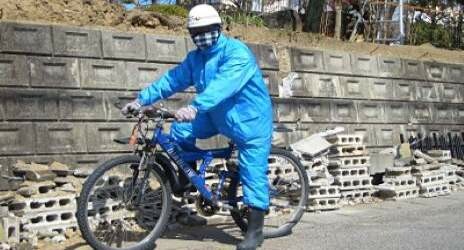
But for the regulation of assistance following a disaster with nuclear implications, the Convention on Assistance in the Case of Nuclear Accident or Radiological Emergency is the go-to instrument. Adopted in 1986 following the Chernobyl accident, the Convention provides a framework for bilateral assistance from among its 105 state parties.
As so many instruments regulating international disaster assistance, the Convention provides a mechanism for the offer and acceptance of assistance, facilitated entry of equipment and personnel, tax exemption, and qualified immunities for personnel. Less common, the Convention identifies an international organisation – the International Atomic Energy Agency – as a something of clearing house for offers of assistance and information relating to a nuclear disaster, as well as a source of additional technical assistance.
Within an hour after the magnitude 9 earthquake that struck the east coast of Honshu on 11 March, the framework established by the Convention was called upon. Even before the resulting tsunami waves reached the Fukushima Dai-ichi site, the IAEA activated its Incident and Emergency Centre and 24-hour contact points. In the ensuing days and weeks, international assistance specifically for the nuclear disaster was received from more than three dozen states and another dozen international organisations. As envisioned by the Convention, the IAEA provided technical assistance from its offices in Europe and through the deployment of monitoring and assessment teams, transmitted offers of assistance from IAEA Member States to the Japanese authorities, and led interagency coordination among international organisations such as the WHO, FAO and WMO.
Despite this activity and the active public profile maintained by the Agency, including through regular press conferences and a voluminous update log on its webpage, the Agency has not been free from criticism. Scholars and commentators have characterised the IAEA response as “sluggish” and “confusing” (see e.g., a much cited article “Nuclear agency faces reform calls”, Nature, 26 April 2011, available here).
Now months after the earthquake and tsunami that triggered the nuclear disaster, parallels are being drawn between Fukushima and Chernobyl not for the scale or impact of the disasters – but for their incitement of reform. IAEA Director General, Yukiya Amano, reported to the IAEA Board of Governors that “the current international emergency response framework needs to be reassessed. It was designed largely in the wake of the Chernobyl disaster in 1986, before the information revolution. It reflects the realities of the 1980s, not of the 21st century.” (Introductory Statement to Board of Governors, 21 March 2011, available here).
French President Nicholas Sarkozy is another vocal reform proponent, though his calls are aimed at international enforcement of safety standards and the Convention on Nuclear Safety (“Fukushima, Chernobyl and UN-Sponsored Nuclear Safety Reforms,” Diplomatic Courier, 16 April 2011, available here). Others, including the United States, would focus instead on promoting and leveraging existing instruments to strengthen the global nuclear safety network.
The reform debate played out this month at the IAEA Ministerial Conference on Nuclear Safety, which convened in Vienna 20-24 June. The Ministerial Declaration adopted by the Conference did call for improvements in global nuclear safety and tasked the IAEA Director General to prepare an Action Plan to address nuclear safety, emergency preparedness and response and radiation protection of people and the environment, as well as the international legal framework. The Action Plan will be submitted to the IAEA Board of Governors and General Conference in September of this year.
Should the existing legal framework for assistance be reviewed, this may prove an opportunity to close a significant gap in the Convention on Assistance in the Case of Nuclear Accident or Radiological Emergency. The Convention addresses only bilateral state assistance and the role of intergovernmental organisations. Striking is the absence of any reference actors such as the Red Cross Red Crescent or civil society organisations and the critical role they play in addressing the humanitarian, environmental, social, economic and health consequences of nuclear disasters. This gap is all the more surprising considering that the Convention was concluded in response to the Chernobyl disaster – where the International Federation of Red Cross and Red Crescent Societies and civil society actors mobilised to address the immediate needs of the affected population, and where today in the 25th anniversary year of the disaster, Red Cross National Societies and others continue their work to address the persistent long-term consequences.